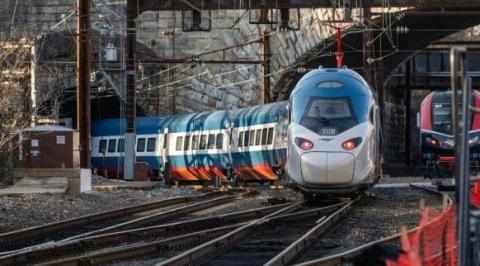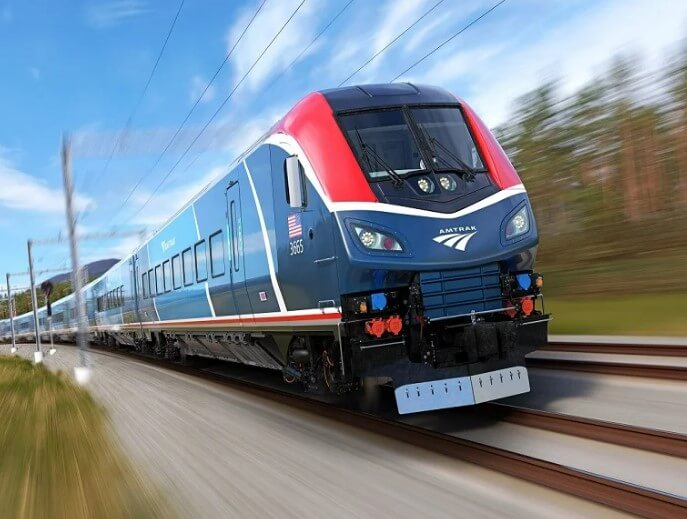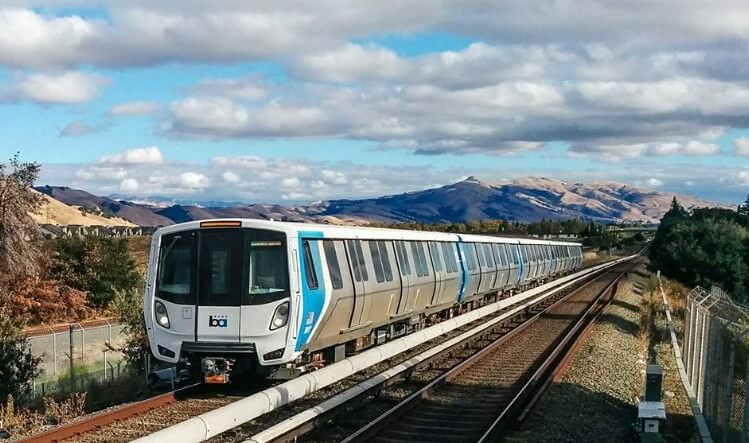
Modern trains are technological marvels, a testament to human ingenuity and the relentless pursuit of efficiency and safety in transportation. At the heart of these sophisticated machines are the electronic components that drive their functionality, ensure their safety, and enhance the passenger experience. Swartz Engineering, a leader in the field of advanced electronic solutions, plays a pivotal role in the development and implementation of these technologies. This blog post explores the key electronic components in modern trains, highlighting their importance and the innovations that make them indispensable in today's rail industry.
1. Train Control and Management Systems (TCMS)
The Train Control and Management System (TCMS) is the brain of modern trains. It integrates various subsystems, ensuring seamless operation and communication. TCMS monitors and controls functions such as propulsion, braking, passenger information systems, and climate control.
Components and Functions
Central Control Units (CCUs): These are the primary processors that manage data from various sensors and systems throughout the train. CCUs process this information and send commands to the relevant subsystems.
Remote Input/Output (RIO) Modules: These modules collect data from different parts of the train and relay it to the CCUs. They also execute commands from the CCUs to control various systems.
Communication Networks: Modern trains use Ethernet or other advanced communication networks to ensure fast and reliable data transfer between components.
2. Propulsion Systems
Propulsion systems are responsible for moving the train. Modern electric trains rely on sophisticated electronic components to manage and optimize the propulsion process.
Components and Functions
Traction Motors: These motors convert electrical energy into mechanical energy to drive the train's wheels. Advanced electronic controllers manage the operation of traction motors, ensuring optimal performance and efficiency.
Inverters: Inverters convert the DC power from the train's power source into AC power, which is used by the traction motors. They also control the frequency and voltage of the AC power to regulate the speed and torque of the motors.
Regenerative Braking Systems: These systems capture the energy generated during braking and convert it back into electrical energy, which can be reused by the train or fed back into the power grid.
3. Signaling and Communication Systems
Signaling and communication systems are crucial for the safe and efficient operation of rail networks. They ensure that trains can communicate with each other and with central control centers to maintain safe distances and prevent collisions.
Components and Functions
Automatic Train Control (ATC) Systems: ATC systems monitor the train's speed and position, automatically adjusting its operation to ensure safety. These systems can take control of the train if the driver fails to respond to critical signals.
Radio Communication Systems: These systems enable communication between trains and control centers, facilitating real-time information exchange and coordination.
Balises and Track Circuits: These components are used to detect the position of trains on the tracks and relay this information to the signaling system.

GET IN TOUCH
The ultimate solution for reliable power control! call us at 276-285-3841
4. Passenger Information and Entertainment Systems
Modern trains are equipped with advanced passenger information and entertainment systems to enhance the travel experience. These systems provide real-time information and various entertainment options to passengers.
Components and Functions
Digital Signage: Displays located throughout the train provide real-time information on schedules, routes, and safety announcements.
Onboard Wi-Fi: Wireless internet access is becoming standard in modern trains, allowing passengers to stay connected during their journey.
Entertainment Systems: These include video screens, audio systems, and interactive displays that offer movies, music, and other entertainment options.
5. Safety and Surveillance Systems
Safety is paramount in rail transportation, and modern trains are equipped with a range of electronic safety and surveillance systems to protect passengers and crew.
Components and Functions
Closed-Circuit Television (CCTV) Systems: CCTV cameras are installed throughout the train to monitor activity and ensure security. Footage can be accessed in real-time by train staff and control centers.
Fire Detection and Suppression Systems: These systems detect smoke and fire and automatically activate suppression systems to prevent the spread of fire.
Emergency Communication Systems: These systems enable passengers and crew to communicate with each other and with emergency services in the event of an incident.
6. Environmental Control Systems
Maintaining a comfortable environment inside the train is essential for passenger satisfaction. Environmental control systems manage heating, ventilation, and air conditioning (HVAC) to ensure optimal conditions.
Components and Functions
HVAC Systems: These systems regulate temperature, humidity, and air quality inside the train. Advanced sensors and controllers ensure that the environment remains comfortable regardless of external conditions.
Air Purification Systems: Modern trains are equipped with air purification systems that remove contaminants and allergens from the air, enhancing passenger comfort and health.
Lighting Systems: Efficient LED lighting systems provide illumination inside the train. These systems can be controlled to adjust lighting levels based on the time of day and occupancy.
7. Power Supply and Distribution Systems
Reliable power supply and distribution are critical for the operation of modern trains. These systems ensure that all electronic components receive the power they need to function correctly.
Components and Functions
Auxiliary Power Units (APUs): APUs provide power to non-propulsion systems, such as lighting, HVAC, and passenger information systems. They ensure that these systems continue to operate even if the main power supply is interrupted.
Battery Systems: Batteries provide backup power in case of a power failure. Modern trains use advanced lithium-ion batteries, which offer high energy density and long life.
Power Distribution Units (PDUs): PDUs manage the distribution of power to various systems and components. They ensure that power is delivered efficiently and reliably.

GET IN TOUCH
The ultimate solution for reliable power control! call us at 276-285-3841
8. Data Acquisition and Analytics Systems
Data acquisition and analytics systems play a crucial role in the maintenance and optimization of modern trains. These systems collect and analyze data from various sensors and systems to provide insights into train performance and conditions.
Components and Functions
Data Loggers: Data loggers collect data from sensors and other electronic components. This data is used to monitor the performance of the train and identify potential issues.
Analytics Software: Advanced analytics software processes the data collected by data loggers, providing insights into train performance, maintenance needs, and operational efficiency.
Condition Monitoring Systems: These systems continuously monitor the condition of critical components, such as traction motors and brakes, to detect signs of wear and tear.
Conclusion
The electronic components in modern trains are integral to their operation, safety, and passenger experience. From propulsion and control systems to safety and environmental controls, these components represent the cutting edge of technology and innovation. Swartz Engineering's contributions to the development and implementation of these systems are a testament to their expertise and commitment to excellence in the rail industry.
As we look to the future, the role of electronic components in modern trains will only become more significant. Advances in AI, IoT, and other technologies will continue to drive improvements in efficiency, safety, and passenger comfort. Swartz Engineering will undoubtedly remain at the forefront of these developments, shaping the future of rail transportation with their innovative solutions and unwavering dedication to quality.
Our Expert Services
Swartz Engineering provides top-quality products to meet our customers' needs. We also make sure our products work reliably and safely. Our products include:
- Type 76 DC Relay
- Type 82 DC Relay
- Swartz Engineering’s Type 64 Ground Relay
- Type 32 Reverse Current Relay
- Type 150 DC
- CSM Shield Monitor
- Metal Oxide Surge Arrestors
- Transducers
- MVIS SL Slim-line Contactor
- Fully-tested Power Control Rooms
- Swartz Engineering’s Portable Substations
CONTACT US
Take the first step towards powering up your operations! call us at 276-285-3841
